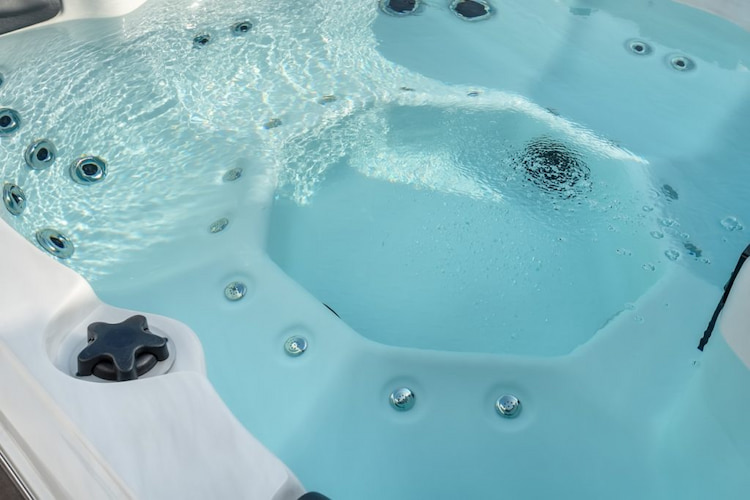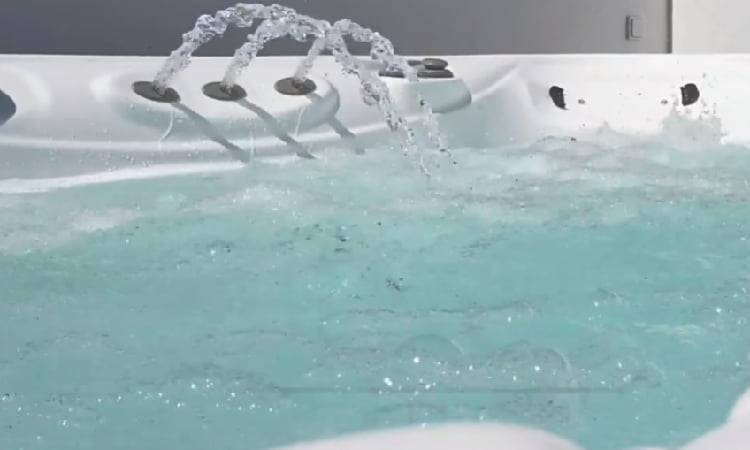You’re enjoying your hot tub, but did you know high stabilizer levels could be a danger? It’s essential to understand their role, identify excessive levels, and know the health risks.
Yes, having a high stabilizer level in your hot tub can be dangerous. Stabilizers like cyanuric acid are used to keep chlorine levels intact but excessive levels can make the chlorine ineffective which may lead to the growth of harmful bacteria and algae. High stabilizer levels can also cause damage to the hot tub material and equipment.
We’ll guide you on reducing these levels and maintaining a safe, enjoyable hot tub experience. So let’s dive into the details. It’s time to ensure your hot tub’s stabilizer levels aren’t in the hot zone!

Quick Navigation
Understanding the Role of Stabilizers in Hot Tubs
Stabilizers, often referred to as cyanuric acid, act as sunscreen for the chlorine in your tub. They protect the chlorine from being broken down by the sun’s ultraviolet rays, ensuring that it lasts longer and works more efficiently.
Without stabilizers, you’d be constantly adding more chlorine to your tub. This not only becomes costly, but it’s also a hassle. On top of that, it could lead to inconsistent chlorine levels, which could cause issues with your water’s pH balance.
If your stabilizer levels are too low, your chlorine will dissipate quickly, leaving your hot tub susceptible to bacteria and algae growth. On the other hand, if the levels are too high, it can cause what’s known as chlorine lock. This is when the chlorine becomes less effective, even if you’re adding more.
To maintain a healthy hot tub, it’s crucial to keep an eye on your stabilizer levels. A balance is necessary to ensure the longevity of your chlorine and the health of your water.
Related Read: What is a Stabilizer in a Hot Tub? [Types of Stabilizers]
How to Identify High Stabilizer Levels
You might be wondering how to identify high stabilizer levels in your hot tub, and it’s actually simpler than you might think. The first step is to purchase a stabilizer test kit, specifically designed to measure Cyanuric Acid (CYA) levels, the primary stabilizer in hot tubs.
You’ll need to collect a water sample from the hot tub, usually about a foot under the water’s surface. You’ll then add a reagent to the sample, which will cause a visible reaction if the CYA levels are too high. The test typically includes a color chart or numerical scale to help you interpret the results.
Normally, the stabilizer level in your hot tub should be between 30 and 50 parts per million (ppm). If the level is above 100 ppm, it’s considered high and could reduce the effectiveness of your sanitizer. Furthermore, high stabilizer levels can lead to issues like cloudy water or even potential health risks.
The Potential Health Risks of High Stabilizer Levels
While many people enjoy the relaxing benefits of a hot tub, high stabilizer levels can pose some serious health risks, and it’s important to understand what they are.
Stabilizers, like cyanuric acid, are used to maintain chlorine levels, but an excess can lead to problems.
| Potential Risk | Explanation | Emotional Impact |
|---|---|---|
| Skin Irritation | High stabilizer levels can cause skin to become dry and itchy, leading to discomfort and possible skin conditions. | You might feel anxious about the potential discomfort and health implications. |
| Eye Irritation | Over-exposure to elevated stabilizer levels can lead to red, irritated eyes. | You might worry about your eye health and the possibility of enduring pain. |
| Respiratory Issues | Breathing in fumes from a hot tub with high stabilizer levels can lead to respiratory problems. | This could trigger fears about long-term health issues and the impact on your lifestyle. |
It’s critical to regularly test and adjust your hot tub’s stabilizer levels for safe and enjoyable use. Remember, you’re in control of your hot tub’s maintenance, and by staying informed, you can ensure a safe and relaxing experience.
Methods to Reduce Stabilizer Concentration in Hot Tubs
If you’ve got a high stabilizer concentration in your hot tub, don’t fret, there are several effective methods you can use to reduce it. The first and most straightforward method is dilution. This involves partially draining your tub and refilling it with fresh water. Remember, you should only do this when the stabilizer, often cyanuric acid, exceeds the recommended levels.
Another approach is to use a product specifically designed to reduce stabilizer levels. These are typically non-toxic and work by breaking down excess cyanuric acid. Follow the manufacturer’s instructions for the best results.
You might also consider switching to a chlorine product that doesn’t contain a stabilizer. This prevents the buildup of excessive stabilizer levels in the first place. For instance, liquid chlorine or calcium hypochlorite can be good alternatives.
Lastly, maintain regular water testing and balancing. This helps you stay proactive about your water chemistry, ensuring it’s always within the safe parameters.
Keep in mind, while managing stabilizer levels can seem daunting, with a little diligence and the right methods, you’ll have it under control in no time. Remember, the aim is to keep your hot tub safe and enjoyable.
Preventive Measures for Maintaining Safe Stabilizer Levels

Maintaining safe stabilizer levels in your hot tub isn’t just about reducing high concentrations, it’s also about taking preventive measures to avoid the buildup in the first place. Being proactive can spare you from unnecessary chemical imbalances in your spa.
Here are some preventive measures you can take:
- Regularly test and adjust your water chemistry: this is the cornerstone of hot tub maintenance. It’s best to test your stabilizer levels at least once a week with a reliable test kit or test strips. Maintain the recommended range of 20-50 ppm.
- Use stabilizer-free products: if you’re consistently battling high stabilizer levels, consider using chlorine products that don’t contain a stabilizer.
- Drain and refill your hot tub frequently: over time, stabilizers can accumulate in your hot tub. Regular draining and refilling can help keep these levels in check.
Frequently Asked Questions
You might experience skin or eye irritation, nausea, and breathing difficulties. Long-term exposure can lead to digestive problems and respiratory issues. It’s important to maintain your hot tub’s stabilizer at appropriate levels.
You should test your hot tub’s stabilizer levels weekly. Consistent checks ensure you’re maintaining a safe, balanced environment. If levels are high, it can affect water quality and potentially cause skin or eye irritation.
Yes, high stabilizer levels can impact your hot tub’s performance. They can reduce the effectiveness of your sanitizer, making it harder to keep the water clean, and potentially damage your hot tub equipment.
No, all hot tubs can be prone to high stabilizer levels if not properly maintained. However, you’re less likely to face this issue with saltwater systems, as they don’t require additional stabilizers.
Yes, using stabilizers in hot tubs can have environmental impacts. They can alter water chemistry, affecting aquatic life. Overuse may lead to chemical-resistant bacteria, disrupting local ecosystems. It’s crucial to use them responsibly.
Conclusion
In wrapping up, it’s clear that too much stabilizer in your hot tub can pose potential health risks. Regular testing and preventive measures are key to maintaining safe levels.
If concentrations get too high, various methods can be used to reduce stabilizer levels. However, prevention is always better than cure, so keep an eye on your hot tub’s chemistry and stay safe while enjoying your soak.


![What is a Stabilizer in a Hot Tub? [Types of Stabilizers] what is a stabilizer in hot tubs and how does it work](https://hottubtales.com/wp-content/uploads/2023/10/what-is-a-stabilizer-in-hot-tubs-and-how-does-it-work-250x150.jpg)


![Can You Over Shock a Hot Tub? [What to Do if You Did?] can you over shock a hot tub](https://hottubtales.com/wp-content/uploads/2023/10/can-you-over-shock-a-hot-tub-250x150.jpg)
